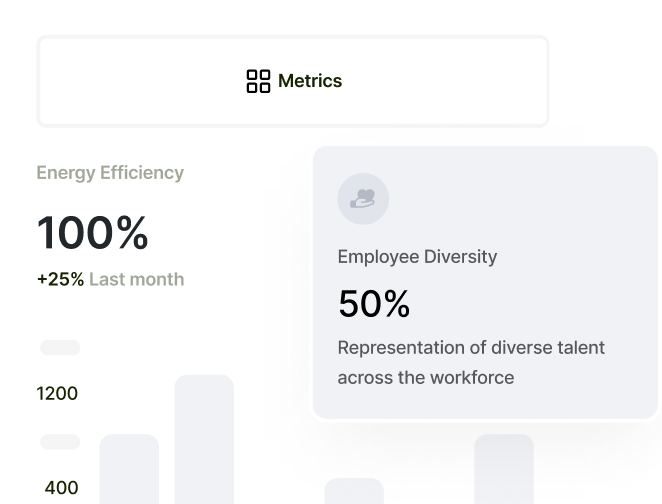有興趣?立即聯絡我們
請填寫右側表單,或直接郵件聯絡我們:
sales@senecaesg.com
The rapid evolution of sustainability disclosure frameworks has driven an equally urgent need for digital standardisation in ESG reporting. The eXtensible Business Reporting Language (XBRL) is at the heart of this transformation, enabling companies to submit sustainability information in machine-readable formats that enhance transparency, comparability, and accessibility across markets. In the European Union, the European Financial Reporting Advisory Group (EFRAG) and other global bodies such as the 全球报告倡议组织(GRI) are leading efforts to build XBRL taxonomies that support digital sustainability reporting under frameworks like the 企业可持续发展报告指令 (CSRD) 和 欧洲可持续发展报告标准 (ESRS) [1][2][3][4][6].
XBRL is an open, international standard for the digital exchange of business information. It structures data through a system of tags, known as taxonomies, that enable sustainability and financial reports to be processed, compared, and analysed automatically. By converting human-readable disclosures into structured data, XBRL ensures that corporate sustainability information is not only transparent but also interoperable across jurisdictions and reporting frameworks.
In the ESG context, XBRL’s benefits are twofold. First, it allows investors, regulators, and stakeholders to retrieve, aggregate, and analyse data rapidly across thousands of companies. Second, it enhances data integrity and accessibility, ensuring that sustainability information can be reused efficiently for compliance, benchmarking, and assurance purposes. As global sustainability regulations expand, XBRL has become indispensable in harmonising the growing volume of ESG data being reported.
Under Article 29d of the EU Accounting Directive, as amended by the CSRD, companies must prepare their management reports in an electronic reporting format and digitally tag their sustainability disclosures. To facilitate this, the European Commission tasked EFRAG with developing XBRL taxonomies that translate ESRS disclosure requirements into digital, machine-readable formats [1][2].
Once adopted as part of the 欧洲单一电子格式(ESEF), these XBRL taxonomies will underpin the EU’s system for digital tagging of sustainability data, ensuring consistency with financial reporting and enabling integration into the European Single Access Point (ESAP).
| EFRAG XBRL Development Areas | Regulatory Basis | 目的 |
| ESRS Set 1 XBRL Taxonomy | Commission Delegated Regulation (EU) 2023/2772 | Digitises ESRS sustainability statements for all large and listed companies. |
| Article 8 XBRL Taxonomy | Regulation (EU) 2020/852 & Delegated Regulation (EU) 2021/2178 | Translates EU Taxonomy disclosures into digital format. |
| VSME XBRL Taxonomy | Voluntary Sustainability Reporting Standard for SMEs (2025) | Simplifies ESG reporting for non-listed SMEs. |
EFRAG’s taxonomies are being developed in coordination with ESMA, which will prepare the Regulatory Technical Standards (RTS) for tagging sustainability statements. These RTS will ultimately be adopted by the European Commission via a Delegated Act, amending Regulation (EU) 2019/815 on the 欧洲单一电子格式(ESEF) [1][2].
Beyond EFRAG’s efforts, the XBRL Europe Sustainability/ESG Working Group, established in 2019, plays a vital role in aligning ESG data digitisation across the continent. Co-chaired by representatives from XBRL Netherlands and DFIN, the group focuses on harmonising digital ESG disclosures, supporting the electronic filing and analysis of non-financial data, and collaborating with institutions such as EFRAG and ESMA [5]. Its ongoing initiatives include developing whitepapers, engaging with policymakers, and providing guidance on implementing XBRL-based ESG reporting in Europe.
In parallel with European developments, the 全球报告倡议组织(GRI) has launched its own Sustainability Taxonomy, offering a machine-readable version of all GRI Standards. This initiative enables companies to produce digital sustainability reports that are compatible with the XBRL-based taxonomies of the ESRS and 國際永續發展標準委員會 (ISSB) [6]. The GRI’s taxonomy enhances data comparability and global interoperability, allowing organisations to share structured sustainability data that can be analysed consistently across regions.
According to the GRI, its new taxonomy will help close the gap between reported impacts and users’ ability to interpret them, improving data quality and analytical speed. Training programmes and validation tools, expected by late 2025, will support companies and third-party service providers in adopting digital sustainability reporting [6].
A notable innovation emerging from EFRAG’s digitalisation efforts is the Digital-Report-to-XBRL Converter, designed for the VSME framework. The converter transforms Excel-based sustainability templates into tagged Inline XBRL reports and validates them using full XBRL specifications. The tool is open-source, licence-free, and adaptable for integration across different platforms, democratising access to digital reporting technology for small and medium-sized enterprises [4].
As sustainability reporting shifts from narrative to data-driven disclosure, XBRL stands as the foundation of a digitally connected ESG ecosystem. The integration of ESRS, EU Taxonomy, and GRI digital standards into interoperable XBRL taxonomies will allow regulators and investors to access high-quality ESG data in real time, improving risk assessment and market efficiency.
Digital tagging will become mandatory once the European Commission adopts EFRAG’s XBRL taxonomy into law under the ESEF framework, a move expected to transform how sustainability information is reported, exchanged, and verified. By enabling machine-readable ESG reporting, XBRL will help bridge the gap between corporate disclosure and stakeholder accountability, setting a global precedent for transparency and comparability in sustainable finance.
资料来源
[1] EFRAG. Digital Reporting with XBRL (2024). Available at: https://www.efrag.org/en/sustainability-reporting/esrs-workstreams/digital-reporting-with-xbrl
[2] EFRAG. ESRS XBRL Taxonomy (2024). Available at: https://www.efrag.org/en/projects/esrs-xbrl-taxonomy/concluded
[3] EFRAG. Article 8 XBRL Taxonomy (2024). Available at: https://www.efrag.org/en/projects/article-8-xbrl-taxonomy/concluded
[4] EFRAG. VSME Digital Template and XBRL Taxonomy (2025). Available at: https://www.efrag.org/en/vsme-digital-template-and-xbrl-taxonomy
[5] XBRL Europe. ESG/Sustainability Working Group (2022). Available at: https://www.xbrleurope.org/?page_id=2883
[6] ESG Today. GRI Launches Digital Taxonomy to Enable Machine Readable Sustainability Disclosures (2025). Available at: https://www.esgtoday.com/gri-launches-digital-taxonomy-to-enable-machine-readable-sustainability-disclosures/
監控投資組合 ESG 表現,自建 ESG 框架,讓商業決策更精準。

請填寫右側表單,或直接郵件聯絡我們:
sales@senecaesg.com7 Straits View, Marina One East Tower, #05-01, Singapore 018936
+(65) 6223 8888
Gustav Mahlerplein 2 Amsterdam, Netherlands 1082 MA
(+31) 6 4817 3634
台灣台北市大安區敦化南路二段77號7樓,106414
(+886) 02 2706 2108
Viet Tower 1, Thai Ha, Dong Da Hanoi, Vietnam 100000
(+84) 936 075 490
Av. Santo Toribio 143,
San Isidro, Lima, Peru, 15073
(+51) 951 722 377
1-4-20 Nishikicho, Tachikawa City, Tokyo 190-0022